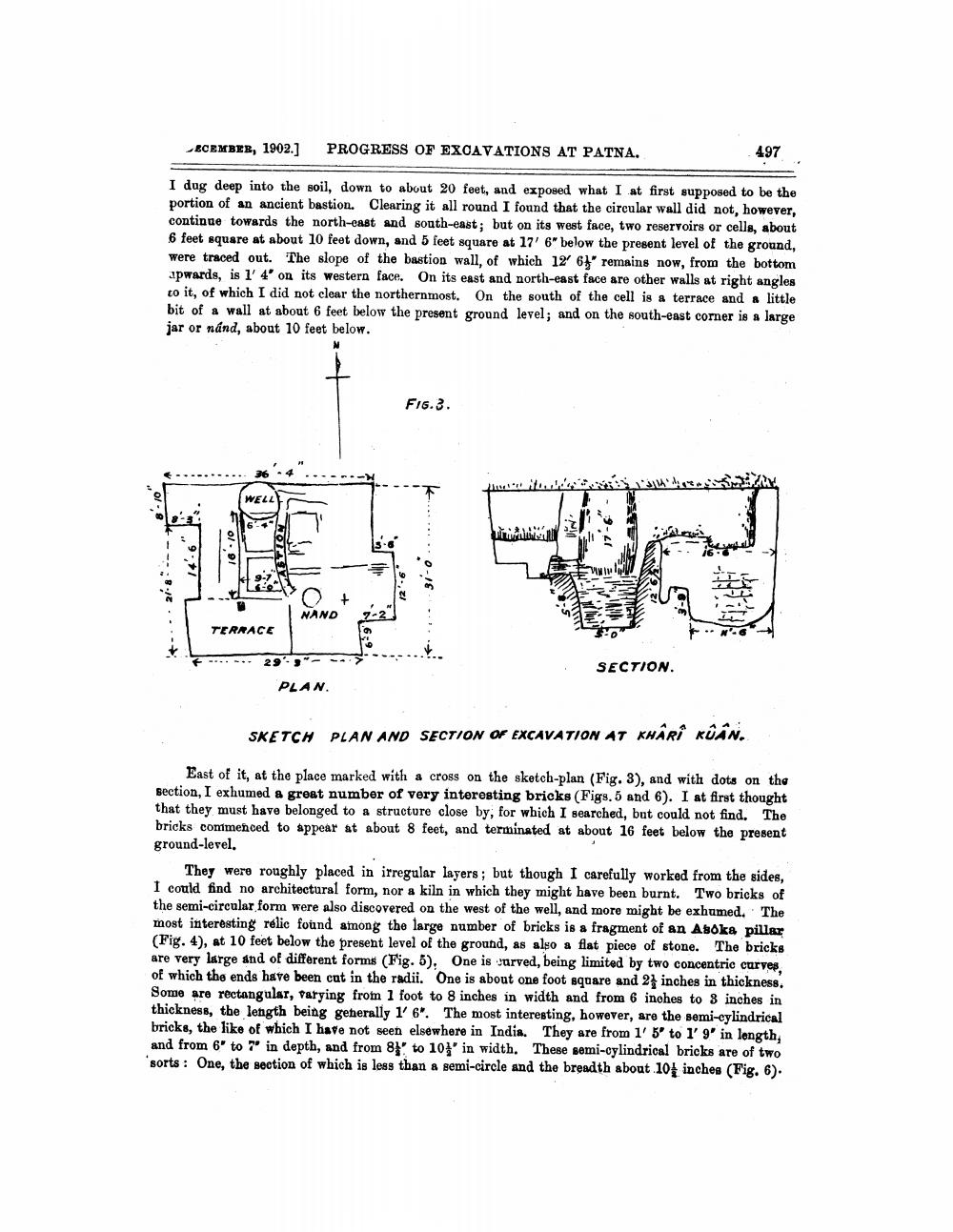________________
497
ECEMBER, 1902.]
PROGRESS OF EXCAVATIONS AT PATNA.
I dug deep into the soil, down to about 20 feet, and exposed what I at first supposed to be the portion of an ancient bastion. Clearing it all round I found that the circular wall did not, however, continue towards the north-east and south-east; but on its west face, two reservoirs or cells, about 6 feet square at about 10 feet down, and 5 feet square at 17' 6" below the present level of the ground, were traced out. The slope of the bastion wall, of which 12′ 6" remains now, from the bottom apwards, is 1' 4" on its western face. On its east and north-east face are other walls at right angles to it, of which I did not clear the northernmost. On the south of the cell is a terrace and a little bit of a wall at about 6 feet below the present ground level; and on the south-east corner is a large jar or nánd, about 10 feet below.
WELL
TERRACE
NAND
PLAN.
F16.3.
$10
SECTION.
SKETCH PLAN AND SECTION OF EXCAVATION AT KHARI KUAN.
East of it, at the place marked with a cross on the sketch-plan (Fig. 3), and with dots on the section, I exhumed a great number of very interesting bricks (Figs. 5 and 6). I at first thought that they must have belonged to a structure close by, for which I searched, but could not find. The bricks commenced to appear at about 8 feet, and terminated at about 16 feet below the present ground-level.
They were roughly placed in irregular layers; but though I carefully worked from the sides, I could find no architectural form, nor a kiln in which they might have been burnt. Two bricks of the semi-circular form were also discovered on the west of the well, and more might be exhumed. The most interesting relic found among the large number of bricks is a fragment of an Asoka pillar (Fig. 4), at 10 feet below the present level of the ground, as also a flat piece of stone. The bricks are very large and of different forms (Fig. 5), One is curved, being limited by two concentric curves, of which the ends have been cut in the radii. One is about one foot square and 2 inches in thickness. Some are rectangular, varying from 1 foot to 8 inches in width and from 6 inches to 3 inches in thickness, the length being generally 1' 6". The most interesting, however, are the semi-cylindrical bricks, the like of which I have not seen elsewhere in India. They are from 1' 5" to 1' 9" in length, and from 6 to 7 in depth, and from 8 to 10" in width. These semi-cylindrical bricks are of two 'sorts: One, the section of which is less than a semi-circle and the breadth about 10 inches (Fig. 6).




